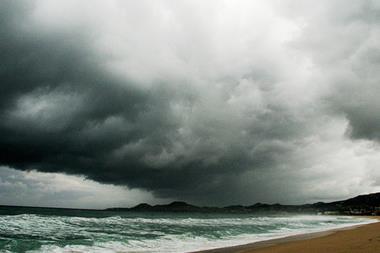A year on since Superstorm Sandy devastated the North-Eastern seaboard of the US, businesses are wising up to the pitfalls of complacency says FM Global
Superstorm Sandy highlighted the value of good risk practice – and FM Global operations vice-president Tom Roche says preparation is the key take-home message for businesses.
The category 2 hurricane made landfall on 29 October 2012 and caused an estimated €8.7bn worth of economic damage in New York alone, but Roche says that there were no surprises as flood maps available before the event gave a clear indication of the area Sandy was due to hit, allowing for appropriate measures to be taken in preparation.
Speaking to StrategicRISK, Roche said: “There weren’t that many surprises in terms of the extent to which the flooding could happen so people could plan and could prepare. Our own studies would show that people who had plans, had downtime of about 10 days, with others we are talking about months of downtime.
“Whether it is a hurricane, earthquake or a flood – there is information that can be available. It’s harder to find in some countries than it is in others but it helps you to prepare and helps to plan.”
Roche believes preparation is key, but guarding against complacency is also vital and he says terms such as ‘a one -in-100-year’s storm’ should be guarded against with vigilance as businesses can neglect their duties to protect themselves from natural catastrophes such as Sandy.
He said: “We band around terms like one-in-100-year storms and people think ‘wow – that’s such long odds’, but it’s not really.
“If you are in a one in a hundred year flood zone, you are talking about over the average life of a building of 25 years so there’s a 22% chance that you are going to see that flood, but people don’t think about it that way.”
Roche claimed businesses were beginning to learn the best practices and effective measures taken by others in events such as Superstorm Sandy which could come down to something as simple as moving critical equipment to higher points within the building over time.
He added: “You can’t stop the flood water getting into your building, you can’t stop the wind blowing or the ground shaking but the majority of loss is preventable and you can do some things that will minimise the impact on you so that you can still do business tomorrow.”




















No comments yet